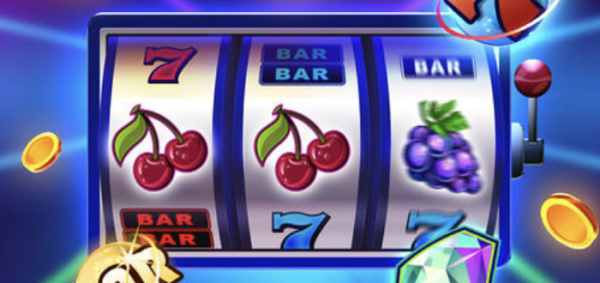RTP Myths and Maths: Why Slot Payouts Are Confusing UK Players
Return-to-Player is usually shown as a single percentage, its purpose being to show how much a slot or casino game pays back over time. The reality is more complex; the number comes from controlled modelling, regulatory limits, and the version an operator decides to run. This explainer unpacks what that figure really measures and why it can’t tell you how a slot will behave in a single sitting.
RTP, House Edge and What the Percentage Really Means
Online slots generally fall between 94 and 97 percent RTP. A game listed at 96 percent effectively carries a 4 percent house edge, meaning that over millions of spins, about £96 of every £100 wagered is recycled back into play, and £4 remains as operator margin.
The percentage reflects long-term results, it’s not meant as a predictor of any given short session. Individual results swing widely, but the underlying model always trends towards its tested average. Every spin still runs on chance within the statistical framework the developer sets.
UK rules require that these payout ranges are verified by independent labs such as eCOGRA or GLI before launch. Those audits confirm that the published RTP aligns with the actual code. Understanding that 96-to-4 balance is the key to reading every figure that follows on a slot’s information sheet. You can find the regulator’s rulebook in the Licence Conditions and Codes of Practice (LCCP).
Volatility vs RTP
Studio Maths, Versions and Configuration A slot begins with a fixed mathematical model. Developers often submit several RTP versions of that same model, and operators select which version to deploy. Reels, symbols and features remain identical across versions; the long-run return target is what changes. Each version goes through the accredited test cycle used at launch. Some of the same laboratories like eCOGRA and GLI run code checks and large-sample simulations to confirm that the stated percentage matches the model and that live monitoring will catch irregularities once the game is in production.
Two games can share the same 96% RTP but still play differently. Volatility describes how payouts are spread. High-volatility titles may go longer between wins but pay more when they land, while low-volatility ones return smaller amounts more often. Medium-volatility falls between the two, with more even results and the occasional chance of a bigger payout.
Hit frequency adds another layer. It’s the proportion of spins that return anything at all, often including small outcomes that are below stake. A slot with a modest hit rate can feel “quiet” even if its long-run RTP is identical to a busier game.
Bonus weighting matters as well. Part of the RTP is reserved for features e.g. free spins, multipliers, hold-and-spin, so more of the expected return arrives during triggered rounds. If features are rare, the base game can feel lean while you wait for the trigger; when features land, the statistics catch up quickly.
RTP sets the average return, not the pattern of wins. Volatility, hit rate and feature weighting shape the ride. This is why two games with the same published percentage can leave very different impressions over a short session.
Studio Maths, Versions and Configuration
A slot begins with a fixed mathematical model. Developers often submit several RTP versions of that same model, and operators select which version to deploy. Reels, symbols and features remain identical across versions; the long-run return target is what changes.
Each version goes through the accredited test cycle used at launch. Some of the same laboratories like eCOGRA and GLI run code checks and large-sample simulations to confirm that the stated percentage matches the model and that live monitoring will catch irregularities once the game is in production.
Different sites can therefore publish different RTP figures for the same title, both legitimate and tested, because each has opted for a different approved profile.
The Gambling Commission Remote Technical Standards assures compliance when it comes to monitoring RTP.
Where Operators Earn Their Margin
Revenue on slots comes from the mathematical edge baked into each title and how that edge is managed in the product mix. The published RTP determines the long-run split between stakes returned to players and margin retained by the operator, which then rolls up into Gross Gambling Yield (GGY) — the UK regulator’s core revenue measure.
Progressive and “must-hit-by” jackpots add another layer. Linked prize pools are funded by taking a small contribution from wagers; the pot grows until it’s won and then resets. Displays for variable jackpots must update promptly under UK technical standards, which sit alongside broader testing and security requirements.
Promotional overlays influence margin too. Free spins, bet credits and similar offers are also accounted for in GGY and must be presented with clear, accessible terms. UK advertising guidance stresses that significant conditions need to be obvious, with full terms one click away online. That transparency requirement shapes how aggressively offers can be structured without creating compliance risk.
Operators, in short, balance RTP selection, jackpot funding, and promotions to manage commercial outcomes. The player experience looks the same on the surface, but the underlying economics which are recorded and reported as GGY reflect those configuration choices.
Compliance in the UK
In the UK, online slots are run under tight regulation. The Gambling Commission licenses operators and sets the standards that cover randomness, disclosure of RTP, game speed, display of jackpots, and data logging. Approved test houses certify titles before release and review any subsequent change to the maths, paytable, or presentation. Builds are versioned, signed, and tracked.
Live monitoring sits behind the scenes. Operators retain performance records to compare real-world results with the certified model and flag anomalies. Material updates require fresh testing; silent downgrades of RTP aren’t permitted. Customer-facing pages must show core details such as RTP and key feature information in a way that is easy to find.
Consumer protection rules shape how games behave. Features linked to rapid repeat play are restricted; reality checks, timeouts, and clear terms around bonuses are standard. Advertising codes add another layer by requiring prominent significant terms and avoiding claims that could mislead or target vulnerable groups.
This framework doesn’t eliminate variance or guarantee outcomes; it sets boundaries for how products are built, audited, and maintained. In a regulated market, “fair” means traceable maths, verified randomness, and transparent information.
Reading a Slot Sheet Like a Pro
What to look for first:
RTP percentage
The long-run return target. Not to be treated as a specific session forecast.
Volatility rating
Indicates how payouts are spread. Higher volatility means fewer, larger wins; lower means smaller wins more often.
Hit rate
How often any win occurs, including sub-stake results. Low hit rates feel quieter even when RTP is the same.
Feature contribution
Share of RTP tied to features such as free spins or hold-and-spin. A heavy share here means more of the return arrives in bonuses.
Max exposure
The game’s top win potential, usually shown as a multiple of stake. Useful for context, not as a target.
Quick Facts
- Volatility and hit rate shape the feel; RTP sets the average.
- The same title can ship in multiple certified RTP versions.
- UK-licensed sites must disclose RTP and key info clearly.
Title Comparison Options
Understanding how these figures work together helps players read data the same way regulators and developers do. If you’re weighing up games based on something more than theme, it helps to scan published return rates side by side. Independent lists make that easy, and they’re useful when you want to see how top-end percentages stack up across studios and variants. A clear comparison of the highest RTP slots UK gamers enjoy is available from iGamingNuts which sets out headline figures in one place so you can check like-for-like without digging through individual game sheets.
- B.E. Delmer, Gambling911.com














